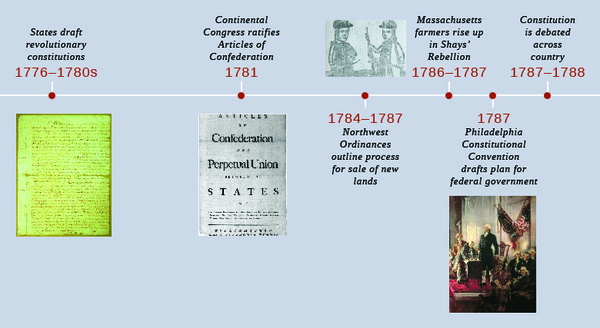| << Chapter < Page | Chapter >> Page > |

While monarchies dominated eighteenth-century Europe, American revolutionaries were determined to find an alternative to this method of government. Radical pamphleteer Thomas Paine, whose enormously popular essay Common Sense was first published in January 1776, advocated a republic: a state without a king. Six months later, Jefferson’s Declaration of Independence affirmed the break with England but did not suggest what form of government should replace monarchy, the only system most English colonists had ever known. In the late eighteenth century, republics were few and far between. Genoa, Venice, and the Dutch Republic provided examples of states without monarchs, but many European Enlightenment thinkers questioned the stability of a republic. Nonetheless, after their break from Great Britain, Americans turned to republicanism for their new government.
Monarchy rests on the practice of dynastic succession, in which the monarch’s child or other relative inherits the throne. Contested dynastic succession produced chronic conflict and warfare in Europe. In the eighteenth century, well-established monarchs ruled most of Europe and, according to tradition, were obligated to protect and guide their subjects. However, by the mid-1770s, many American colonists believed that George III, the king of Great Britain, had failed to do so. Patriots believed the British monarchy under George III had been corrupted and the king turned into a tyrant who cared nothing for the traditional liberties afforded to members of the British Empire. The disaffection from monarchy explains why a republic appeared a better alternative to the revolutionaries.
American revolutionaries looked to the past for inspiration for their break with the British monarchy and their adoption of a republican form of government. The Roman Republic provided guidance. Much like the Americans in their struggle against Britain, Romans had thrown off monarchy and created a republic in which Roman citizens would appoint or select the leaders who would represent them.
Visit the Metropolitan Museum of Art to see a Roman-style bust of George Washington, complete with toga. In 1791, Italian sculptor Giuseppe Ceracchi visited Philadelphia, hoping the government might commission a monument of his creation. He did not succeed, but the bust of Washington, one of the ones he produced to demonstrate his skill, illustrates the connection between the American and Roman republics that revolutionaries made.
While republicanism offered an alternative to monarchy, it was also an alternative to democracy , a system of government characterized by majority rule , where the majority of citizens have the power to make decisions binding upon the whole. To many revolutionaries, especially wealthy landowners, merchants, and planters, democracy did not offer a good replacement for monarchy. Indeed, conservative Whigs defined themselves in opposition to democracy, which they equated with anarchy. In the tenth in a series of essays later known as The Federalist Papers , Virginian James Madison wrote: “Democracies have ever been spectacles of turbulence and contention; have ever been found incompatible with personal security or the rights of property; and have in general been as short in their lives as they have been violent in their deaths.” Many shared this perspective and worked hard to keep democratic tendencies in check. It is easy to understand why democracy seemed threatening: majority rule can easily overpower minority rights, and the wealthy few had reason to fear that a hostile and envious majority could seize and redistribute their wealth.

Notification Switch
Would you like to follow the 'U.s. history' conversation and receive update notifications?